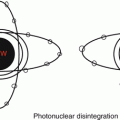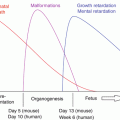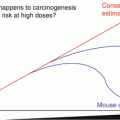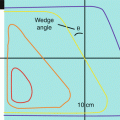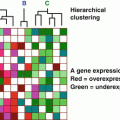, Foster D. Lasley2, Indra J. Das2, Marc S. Mendonca2 and Joseph R. Dynlacht2
(1)
Department of Radiation Oncology, CHRISTUS St. Patrick Regional Cancer Center, Lake Charles, LA, USA
(2)
Department of Radiation Oncology, Indiana University School of Medicine, Indianapolis, IN, USA
Hyperthermia
If ionizing radiation is good at killing cells, and microwaves are good at cooking food, why not do both to the tumors? (see Chapt. 30 for more details).
The use of temperatures between 39 °C (102 °F) and 47 °C (116 °F) to achieve selective cell killing but does NOT use ablative temperatures >50 °C (122 °F) that might cook a tumor and surrounding tissue.
There are many benefits to providing hyperthermia concurrently with ionizing radiation, discussed in much greater detail in Chapt. 30.
Heat (thermia) may be applied externally or using implantable device inside the tumor using the following techniques:
hot water
microwave
radiofrequency
ultrasound
Primary limitation of heat therapy is the technical limitations:
Applying heat selectively to the tumor while sparing normal tissues.
Applying heat within the proper time frame of radiation therapy.
Reducing invasive techniques, especially if they would be required on a daily basis.
Expensive devices or power requirements.
Another limitation is the inability to achieve uniformity (some areas will be heated more than others) due to thermal diffusion of tissue.
Heat can be carried away by the heat-sink effect of venous blood flow (think of water-cooled machinery).
Heat sink effect has a slight benefit to normal tissues so they will not receive as much heat as tumor cells, and tumors that do experience vasodilatation can become better oxygenated, but this makes heat dosing logistically difficult.
Overall, hyperthermia has many benefits but is so technically difficult that it is usually reserved for academic studies or for superficial tumors (melanoma, neck nodes, or superficial breast cancers) or recurrent tumors. Even in these cases, it is not standard of care.
Computers: Miscellaneous Topics That Are Important!
DICOM – Digital Imaging and Communications in Medicine – this is the standard format for medical imaging. Version 3.0 was developed in 1993 but for some reason, there are still departments that do not use this. If you ever request films from an outside facility, it would be wise to request that they are in either DICOM or DICOM-RT format.
DICOM files also batch important information about the file such as patient name, ID, date of birth, slice thickness, kVp, and pixel representation.
DICOM-RT files can include contouring structures, dose, and radiotherapy plans.
Pixel representation is how the data is sent – either big bytes first (big Endian) or little bytes first (little Endian).
There are many variations of the DICOM features. Many free-ware programs on the internet are available that can read non-standard imaging files. Usually imaging studies when loaded on a compact disk also carry the read in format data that may be slightly different than DICOM-RT format.
PACS – Patient Archiving and Communication System – PACS provide massive data storage from any imaging device on a single platform. Every hospital usually has its own PACS system and just about all of them will accept DICOM files (though not all will generate them naturally unfortunately, but they can usually convert their own file format into DICOM). Huge amount of storage and further reading any study is made possible by a PACS.
Image Registration
In the treatment of cancer with radiation, often we use historical CT scans, MRIs or PET scans that are taken on completely different days and are often reconstructed in three dimensions using different algorithms for many reasons:
Resolving and understanding the change in target due to growth or reduction or weight- gain or loss.
Defining structure sets from uniqueness of imaging modalities such as CT, MRI and PET.
Image registration is a process to unify various images into a single coordinate system for visualizing multiple image sets taken at different points in time, different modalities and different conditions of the same patient.
Positron Emission Tomography
Image registration in PET imaging had been a difficult process due to loss of anatomical information. Thanks to innovation of CT-PET device, registration is seamless as data are taken in a single coordinate system where anatomy is displayed on the physiological image in same coordinate.
There continues to be a slight problem in CT-PET due to temporal variation as images are taken at different time phase (you still cannot run them both at the EXACT same time, however such problems have not been a major issue and active research is continuing to improve temporal changes in PET images by gated PET imaging.
CT-CT/CT-MRI
Many algorithms are available.
point to point mapping.
surface matching.
pixel by pixel matching.
interactive, and mutual information.

Stay updated, free articles. Join our Telegram channel

Full access? Get Clinical Tree



